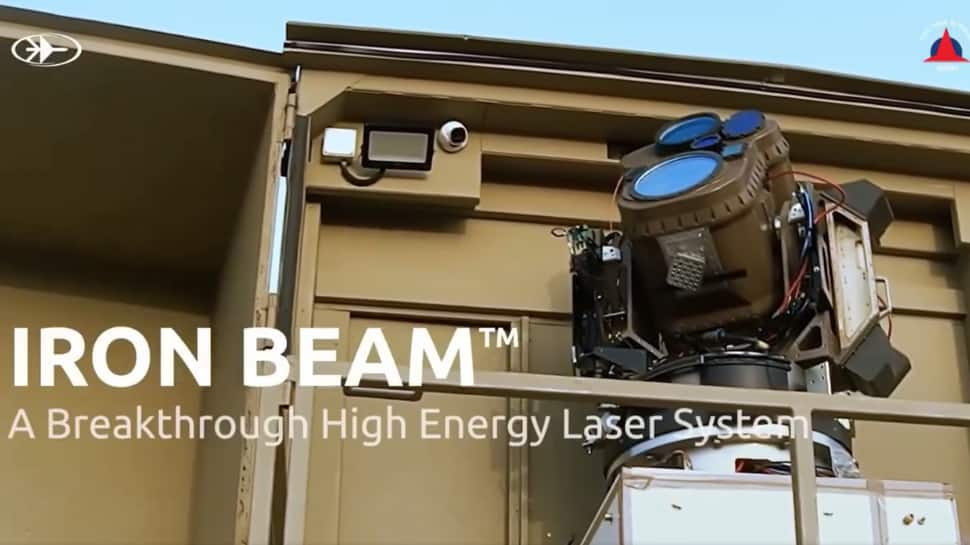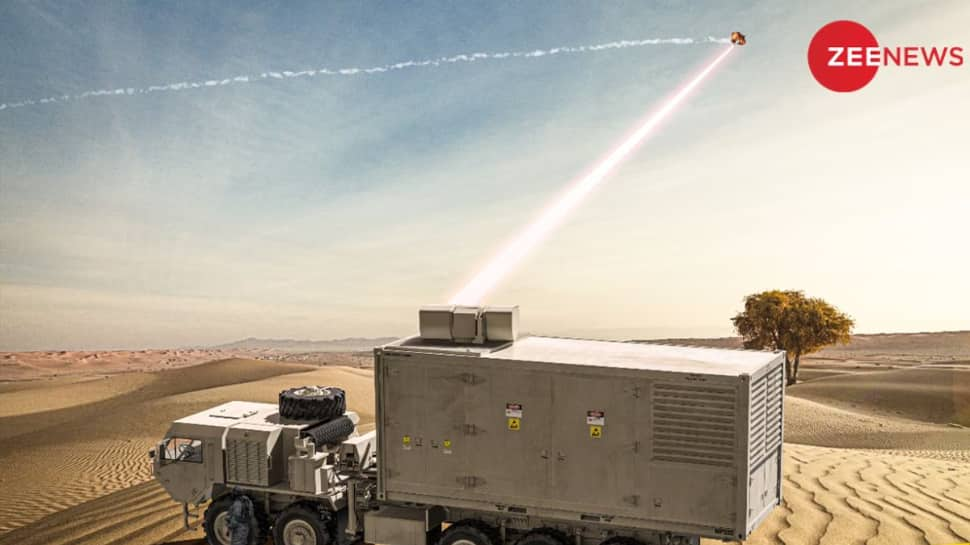Iron Beam: Israel's $500 Million Laser Weapon Has Unmatched Power But One Tiny Weakness
Israel's new Iron Beam laser defense system, set to be operational within a year, will intercept missiles, drones, and rockets with high-speed precision. Israel invested over $500 million in it to complement the Iron Dome, providing a low-cost, unlimited-capacity defense with minimal collateral damage. However, its effectiveness is limited in poor weather, which may restrict its utility under certain conditions. (Picture source - RAFAEL Advanced Defense Systems)
)
Israel's Iron beam in Action: Israel's new laser defense system, called the 'Iron Beam,' is expected to be operational within the next year, according to reports from the Israeli defense ministry. Designed as a high-power laser weapon, Iron Beam aims to intercept and destroy various projectiles with precision, enhancing Israel’s existing defense systems, including the widely-used Iron Dome. The Israeli defense ministry called this development a “new era of warfare,” reflecting its growing significance in the country’s defense strategy.

At a cost of over $500 million, Iron Beam represents a considerable investment for Israel. The advanced system will target missiles, drones, rockets, and mortars, becoming crucial in Israel’s ongoing conflicts with Hamas in Gaza and Hezbollah-backed forces in Lebanon. Recent hostilities have led to extensive destruction in the region, with retaliatory attacks from both sides. One strike even reached the residence of Israeli Prime Minister Benjamin Netanyahu in Caesarea, a coastal city in Israel.

Iron Beam was developed by Rafael Advanced Defense Systems, the same organization behind the Iron Dome, in collaboration with Elbit Systems. The laser weapon operates at the speed of light and has a range that extends from several hundred meters to multiple kilometers. Unlike traditional defense systems, it has an unlimited magazine capacity, incurs almost no cost per interception, and minimizes collateral damage—a significant advantage in densely populated areas.

According to the Israeli defense ministry, Iron Beam will be tasked with neutralizing smaller projectiles, reserving larger threats, such as ballistic missiles, for Arrow 2 and Arrow 3 interceptors. Using directed energy, Iron Beam is specifically effective against targets like drones, which are lightweight and have low radar signatures, making them challenging for traditional systems like Iron Dome. Experts told CNN that Iron Beam’s heat-focused attacks will effectively eliminate such agile targets, enhancing Israel’s multi-layered defense.

One of the system’s biggest advantages is its operating cost. The Institute for National Security Studies in Tel Aviv highlighted that each Iron Dome interceptor missile costs around $50,000. In contrast, Iron Beam’s laser-based technology functions at a fraction of this expense, making it a more sustainable solution for prolonged conflicts. This cost-efficiency could enable Israel to counter prolonged attacks without depleting its resources as quickly.

However, the Iron Beam has a notable limitation: it struggles in poor weather and low-visibility conditions. Inclement weather can reportedly obstruct the laser’s effectiveness, potentially leaving gaps in defense when visibility is compromised. This drawback suggests that while Iron Beam adds a significant layer to Israel’s defenses, it cannot fully replace systems like the Iron Dome in all situations.

The Iron Beam, once fully operational, is expected to play a key role in Israel’s ongoing defense initiatives amid the escalating Middle East conflict. As the technology advances, the weapon’s developers hope to overcome its weather limitations, potentially making it an even more formidable part of Israel’s layered defense strategy against diverse aerial threats.

Israel has been fighting a two-front conflict since September, facing off against Hezbollah in Lebanon and Hamas in Gaza. The latest wave of hostilities began when Hamas launched an assault on October 7, 2023, causing widespread civilian casualties. According to an AFP tally based on Israeli official sources, 1,206 people lost their lives in the initial Hamas attacks. Israel’s retaliatory operations in Gaza have led to the deaths of over 43,000 people, mostly civilians, according to figures from Gaza’s health ministry, which the United Nations considers reliable.

